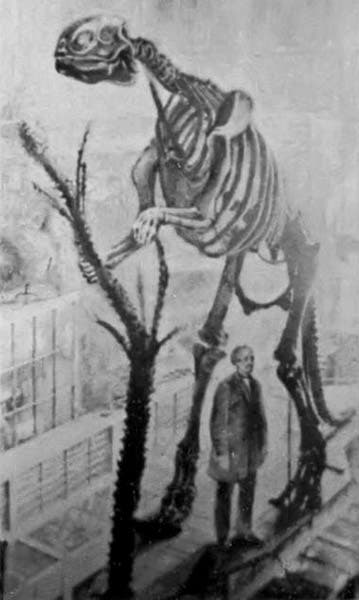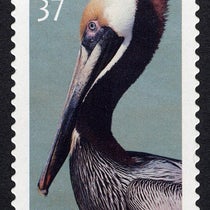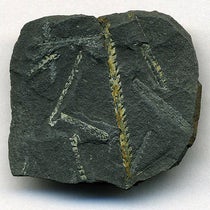Scientist of the Day - Joseph Leidy
Joseph Leidy, an American physician and naturalist, was born Sep. 9, 1823. Leidy was a prominent member of the Academy of Natural Sciences in Philadelphia, and he was the first to recognize dinosaur remains in North America. In 1856, Leidy identified some teeth that had been discovered by Ferdinand Hayden out in the Nebraska Territory; he named three of the new genera Trachodon, Troodon, and Deinodon, all of which are dinosaurs. Leidy truly understood what they were, as he pointed out that Trachodon teeth were similar to those of Iguanodon (the second dinosaur discovered, in England, by Gideon Mantell), and Deinodon resembled Megalosaurus, the first dinosaur discovered, described in 1824 by William Buckland.
Two years later, in 1858, the partial remains of a large dinosaur were discovered in Haddonfield, New Jersey, and presented to the Academy. Leidy described the fossils and named the animal Hadrosaurus. He pointed out that, because of its large hind limbs and smaller forelimbs, Hadrosaurus probably moved more like a kangaroo that a lizard. This was the first suggestion that some dinosaurs might not have been quadrupeds, as they had been modeled by Benjamin Waterhouse Hawkins at Sydenham Park near London a few years before. Leidy published his finds in two volumes of the Proceedings of the Academy, and we displayed both in our Paper Dinosaurs exhibition along with some other Leidy material (see items 9-11 in the exhibition).
The site where Hadrosaurus was discovered at Haddonfield has been proclaimed a National Historic Landmark; you can see in the downtown area a bronze statue of a reconstructed Hadrosaurus, and at the site of the quarry, the NHL plaque. If you go to the Academy of Natural Sciences in Philadelphia, you will be greeted by a statue of Leidy out front, and inside you can see a silhouette of Hadrosaurus, with casts of the original bones described by Leidy placed in position on the outline (first image). With this before you, it is easy to see why Leidy thought Hadrosaurus was a biped.
When Benjamin Waterhouse Hawkins came from England to New Jersey in 1868, he created a full skeletal mount of a Hadrosaurus, which was displayed in the museum, very erect indeed (second image). Somewhat later, Hawkins created a series of oil paintings for the College of New Jersey (now Princeton University), attempting to recreate a Cretaceous New Jersey; we see one of those paintings here, with bipedal hadrosaurs in the center background fleeing predatory Laelaps at the left.
Since you can’t see much detail on the statue, we also show you a portrait of Leidy, photographed around 1870 (third image).
Dr. William B. Ashworth, Jr., Consultant for the History of Science, Linda Hall Library and Associate Professor emeritus, Department of History, University of Missouri-Kansas City. Comments or corrections are welcome; please direct to ashworthw@umkc.edu.








